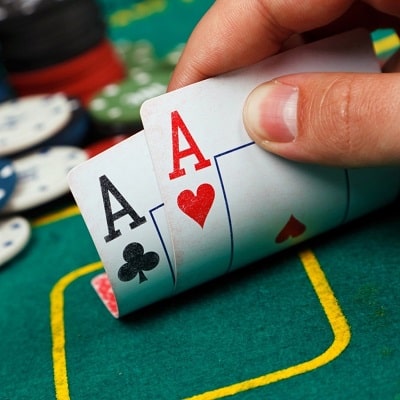How Bonuses Affect Player’s Expected Value: Calculation Examples

Bonuses are a key component of the marketing strategy used by many gambling websites. But beyond being a tool to attract new users or retain existing ones, bonuses can significantly alter the expected value (EV) for a player. This article explores how different bonus types influence EV using real calculation examples, providing a clear understanding of how these offers work from a mathematical standpoint.
Understanding Expected Value in Gambling
Expected value is a statistical concept that calculates the average outcome of a particular event over the long run. In gambling, it represents how much a player can expect to win or lose per unit of currency wagered. For example, if a slot machine has a return to player (RTP) of 95%, the EV is -5% for each £1 bet, meaning a loss of 5p on average.
Bonuses impact this calculation by modifying either the cost of participation or the potential returns. A no-deposit bonus may provide risk-free opportunities, while deposit-matching bonuses increase the player’s bankroll, changing the base assumptions behind EV.
However, bonuses usually come with wagering requirements, time limits, and eligible game restrictions. These factors need to be included in the EV model to reflect the real advantage or disadvantage to the player.
How Bonuses Can Shift the Odds
Let’s consider a deposit bonus of 100% up to £100 with a 30x wagering requirement on the bonus. If a player deposits £100, they receive an extra £100, but must wager £3,000 before withdrawing. Assuming an RTP of 96% and a £1 average bet, the expected loss is £120 (4% of £3,000). This means the player could cash out £80 from their original £200, effectively reducing the loss rate.
In another example, a £10 no-deposit bonus with a 40x wagering requirement would require £400 in bets. At 96% RTP, the expected loss is £16, which is more than the initial bonus. Hence, this type of offer can result in a negative EV unless it comes with low wagering requirements or high-value games.
By contrast, cashback bonuses (e.g. 10% on losses) can slightly improve EV. If a player wagers £1,000 and loses £50, a £5 cashback returns part of the losses, altering the net EV from -5% to -4.5% in this case.
Mathematical Examples of Bonus Influence
To illustrate the impact of bonuses in numbers, let’s take three common types: deposit match, free spins, and loyalty rewards. Each changes the EV in different ways, and understanding the math behind them helps players make informed decisions.
Consider a deposit bonus: A player deposits £50 and receives £50 bonus with 20x wagering on the bonus. That means £1,000 must be wagered. With an RTP of 95%, expected losses are £50. Thus, the original £100 becomes £50, which implies a break-even EV — but only if the player completes all wagering without losing funds early.
For free spins, assume 50 free spins with a value of £0.20 each, total value £10. If the slot has a 96% RTP, the expected return is £9.60. With 35x wagering on winnings, the effective value reduces further. Winning £10 and facing £350 in wagering will lead to an average loss of £14 (4% of £350), meaning the bonus may have a net negative EV.
Loyalty Schemes and Long-Term Value
Loyalty rewards are often overlooked in EV calculations, but they can cumulatively shift outcomes. Programs offering comp points that convert to cash or free bets improve the player’s overall returns over time. For instance, a 0.5% cashback on total bets may appear negligible but adds value in high-volume play.
Assume a player wagers £10,000 monthly and receives £50 in loyalty cashback. That’s an EV improvement of 0.5%. If the RTP is 95%, actual loss is £500. The £50 return reduces the effective loss to £450, changing the EV from -5% to -4.5%.
This improvement can be critical in strategies involving low-volatility games where churn is high, and loyalty perks are frequently awarded.

When Bonuses Provide a Positive Expected Value
Although most bonuses are structured to favour the gambling site, specific conditions may lead to a positive EV. These situations are rare and often occur when wagering requirements are low, or when a bonus can be used on games with high RTP and low variance.
For example, a 200% deposit bonus with 10x wagering on the bonus used on a blackjack game (RTP 99.5%) creates an environment where expected losses may be lower than the bonus value. If the total bonus is £200, and £2,000 must be wagered, the expected loss at 0.5% house edge is £10 — much lower than the bonus amount, resulting in positive EV.
Such opportunities are typically limited-time offers and may include additional terms like betting caps or limited withdrawal options. Players need to read the full terms and simulate different outcomes before considering them profitable.
Managing Risk When Chasing Bonuses
Even when bonuses offer favourable EV, risk remains a factor. High wagering requirements increase the chance of bankroll depletion before completion, especially on volatile games. Players may lose before unlocking any winnings, effectively nullifying any theoretical advantage.
Bankroll management becomes crucial. Playing low-volatility games, reducing bet sizes, and tracking wagering progress can improve the likelihood of reaching withdrawal conditions. Without such discipline, even high-EV bonuses can turn into losses.
It is also wise to avoid stacking bonuses or participating in overlapping promotions without clear understanding, as some operators may forfeit bonuses if conditions are breached, affecting EV and the player’s balance.




